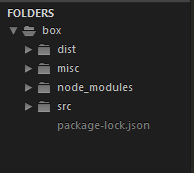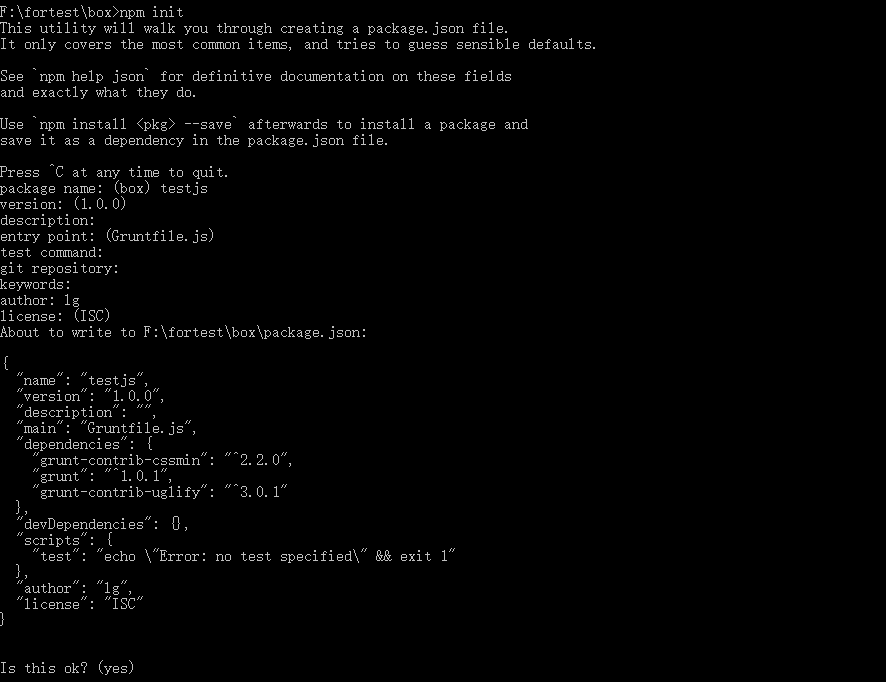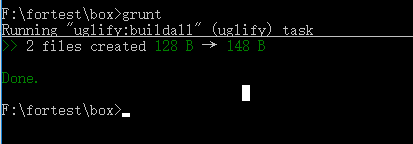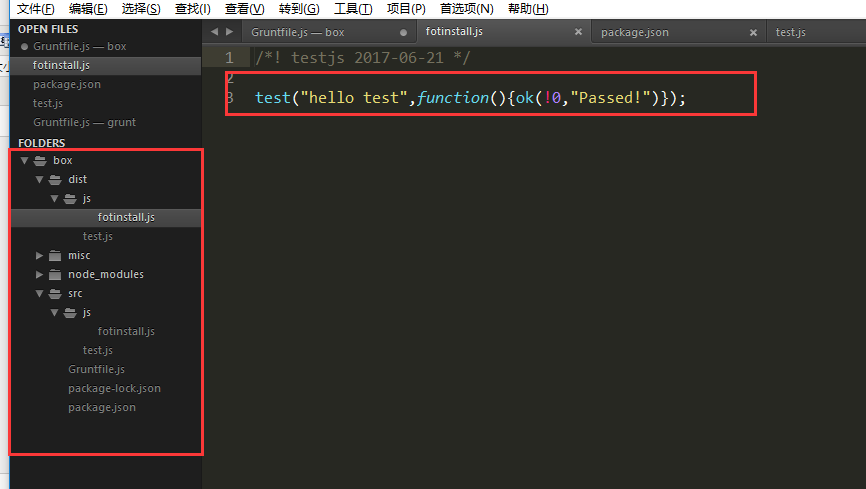安装node.js的环境和grunt插件在上一篇已经将过,点击这里跳到上一篇
所以我们直接从压缩插件的安装开始讲 起
1.安装uglify插件
目录结构如下:

命令行:npm install grunt-contrib-uglify

安装完后我们的node_modules下面就多了一个文件夹

2.配置Gruntfile.js文件
如下配置就可以压缩所有js文件,压缩后的文件名为原名
module.exports = function (grunt) { grunt.initConfig({ pkg: grunt.file.readJSON('package.json'), uglify: { options: { banner: '/*! <%= pkg.name %> <%= grunt.template.today("yyyy-mm-dd") %> */\n' //添加banner }, buildall: { options: { mangle: true, compress: { drop_console: true//在控制台中抑制警告消息。 }, report: "min" //输出压缩率,可选的值有 false(不输出信息),gzip }, files: [{ expand: true, cwd: 'src', //js目录下 src: '**/*.js', //所有js文件 dest: 'dist' //输出到此目录下 }] } } }); //添加uglify任务 grunt.loadNpmTasks('grunt-contrib-uglify'); //默认执行该任务 grunt.registerTask('default', ['uglify']); }
3.配置package.json文件
依然是通过 npm init命令来配置

代码如下:
{ "name": "testjs", "version": "1.0.0", "description": "", "main": "Gruntfile.js", "dependencies": { "grunt-contrib-cssmin": "^2.2.0", "grunt": "^1.0.1", "grunt-contrib-uglify": "^3.0.1" }, "devDependencies": {}, "scripts": { "test": "echo \"Error: no test specified\" && exit 1" }, "author": "lg", "license": "ISC" }
4.最后就是来压缩我们的文件了
输入 grunt

可以看到我们src下面的文件已经压缩到dist下面了

如果想了解更多关于uglify的内容请参见官网





















 被折叠的 条评论
为什么被折叠?
被折叠的 条评论
为什么被折叠?








